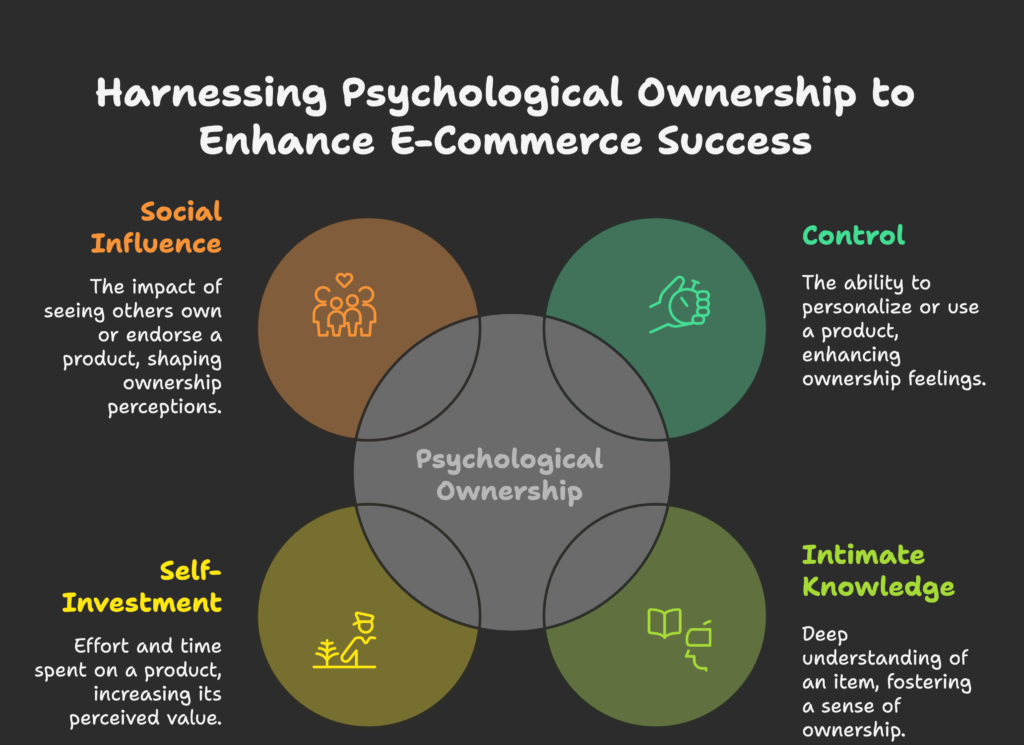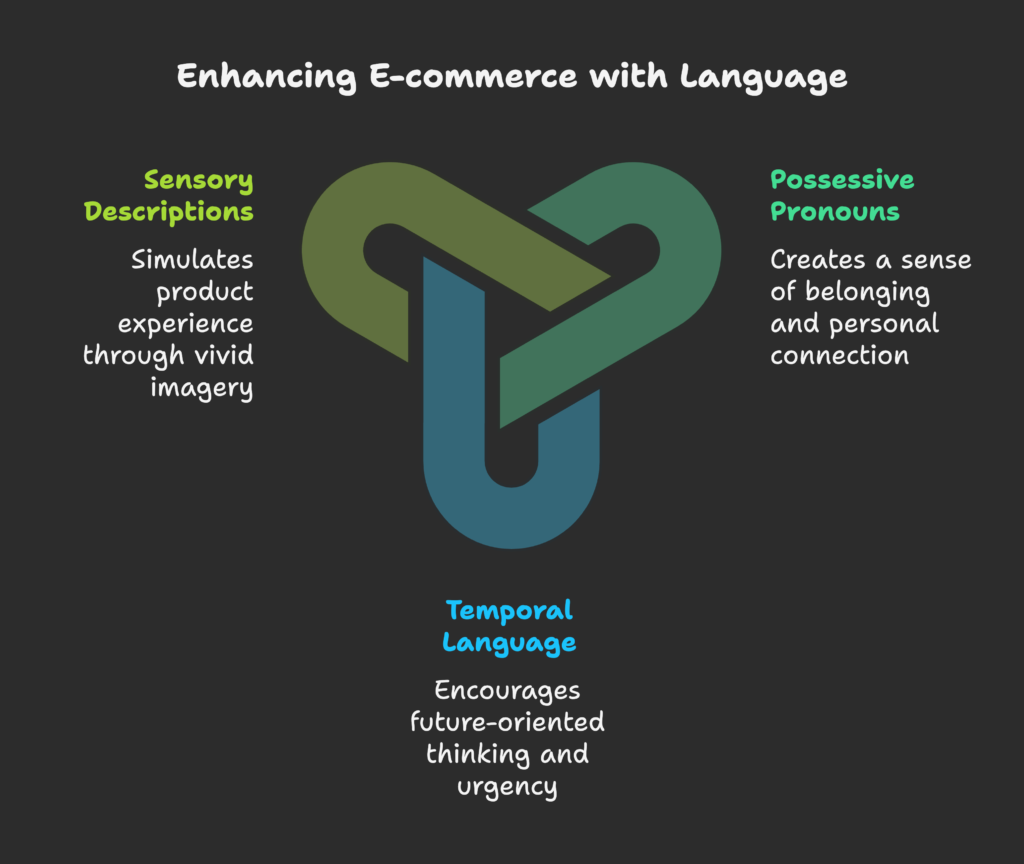Have you ever felt oddly protective over a product you’ve barely just discovered? Or have you noticed how excited you get when you imagine owning something before you even click “Buy”? If these questions spark your curiosity, you’re in the right place! In this article, you will learn how the “Endowment Effect” and strategic pre-ownership language can boost the perceived value of products in e-commerce. By the end, you’ll know how to apply these insights in your own online store. Ready? Let’s dive in!
Understanding the Endowment Effect
In this section, we’ll explore the history, core concepts, and current research on the endowment effect. By the end, you’ll see how this fascinating bias shapes buyer behavior in online shopping.
Definition and Conceptual Framework
The endowment effect is a psychological bias where people assign greater value to items they own (or feel they own) compared to identical items they do not own. This phenomenon has roots in behavioral economics and was famously highlighted in research by Kahneman, Knetsch, and Thaler (2020). Historically, the endowment effect was studied by observing how an owner’s willingness to accept (WTA) compensation for an item was consistently higher than a potential buyer’s willingness to pay (WTP) for the same item. In digital environments, this effect persists, influencing how we interact with virtual goods, subscriptions, and any product we imagine having in our possession.
Recent studies, such as those by Hoyer & Steckel (2023), confirm that even in modern online markets, once we picture an item as “ours,” our minds shift. We perceive it as more valuable, creating a gap between its objective price and our personal price.
Psychological Foundations of the Endowment Effect
Loss aversion lies at the heart of the endowment effect. People prefer avoiding losses over acquiring equivalent gains, so the idea of giving up something “owned” feels worse than never getting it in the first place. Add to this our possession attachment—where an item becomes part of our identity—and you have a powerful bias that is hard to shake.
This bias also overlaps with other cognitive tendencies like the status quo bias, where people resist change, and the mere ownership effect, where simply possessing something increases its appeal. Neurological studies (such as Starmans, 2023) suggest that certain brain regions light up when we feel something is ours, indicating a deep-seated response. Additionally, cultural contexts can shape how strongly people experience ownership. Yet, across the globe, the urge to value what’s “ours” is a common thread.
Ready to see how this ties to feeling ownership even before making a purchase? Let’s move on to pre-ownership psychology and uncover the magic of anticipation!
Pre-Ownership Psychology
In this section, we’ll investigate how people can feel ownership long before they legally own a product. We’ll explore the concept of psychological ownership, language patterns, and the powerful role of anticipation in fueling the buying journey.

The Concept of Psychological Ownership
Psychological ownership differs from legal ownership. You may not legally possess something yet, but you develop a mental and emotional sense of “mine.” Researchers describe four routes to psychological ownership, such as control (the ability to personalize or use the product), intimate knowledge of the item, self-investment (effort spent), and social influence (seeing others own or endorse it).
This feeling of ownership increases perceived value—once you think “It’s mine,” you see it as more precious. Some call it the “MINE! phenomenon,” highlighting how powerfully we identify with the items we believe we own. This phenomenon has both cognitive and affective components, where our thoughts (cognitive) and emotional attachment (affective) come together, boosting perceived worth.
Ownership Language and Linguistics
How we talk about possession also matters. Across languages, there are different ways to express what belongs to us, including alienable and inalienable possession. These subtle linguistic differences can shape how strongly we feel ownership. In e-commerce, language that suggests “you already own it” can nudge customers to believe the product is theirs before purchasing.
Cultural contexts also impact this. Some languages naturally use more possessive forms. Others have unique structures that imply a shared or temporary sense of ownership. Effective marketers pay attention to these nuances to make their copy feel personal and inviting.
Anticipation as a Driver of Pre-Ownership
Anticipation is that flutter of excitement when you imagine yourself enjoying something in the future. Neuroscientists highlight that thinking about an upcoming reward can activate the same brain regions as receiving it. This is why anticipation “brings the expected future into the present.” It creates a positive emotional surge that makes future ownership feel real.
By building anticipation in e-commerce—through sneak peeks, waitlists, and teaser campaigns—you create a sense of “I can’t wait to have this,” effectively sparking a powerful feeling of ownership before money ever changes hands.
Now you know how psychological ownership forms even before purchase. Let’s move on to the next stage: applying these insights throughout the e-commerce customer journey.
The E-commerce Customer Journey and Ownership Psychology
This section maps how ownership psychology unfolds at each stage of the buyer’s journey, from awareness to intention. We’ll also see how businesses can build virtual ownership experiences, including AR/VR and pre-order strategies.
Pre-Purchase Stages and Psychological Ownership
The customer journey typically starts with awareness (discovering your brand), moves to consideration (evaluating options), and heads into intention (feeling ready to buy). At each stage, you can introduce elements that spark a sense of ownership: personalized product recommendations, interactive content, and language that frames the shopper’s future product experience.
During the information-seeking phase, hints of ownership—like “your future favorite coffee mug”—can prepare the mind to accept a product as part of one’s identity. The idea is to catch that critical moment when a shopper’s curiosity spikes, and you weave in ownership cues just enough to push them toward purchase.
Creating Virtual Ownership Experiences
E-commerce doesn’t have the benefit of letting people physically touch items. However, tools like AR (Augmented Reality) and VR (Virtual Reality) can simulate the feeling of “this is mine.” Think of virtual fitting rooms or product demonstrations. Visualizing yourself wearing a new jacket or placing a piece of furniture in your living room fosters a genuine sense of ownership.
Even simpler website features, such as 360° product views or letting users customize certain aspects, can enhance this feeling. The more interaction, the more customers believe in their mental ownership of the product.
Pre-Ordering Psychology
Pre-ordering is a powerful way to tap into anticipation and ownership. Customers feel “ahead of the game” and lock in their future possession. This exclusivity can significantly boost the willingness to pay. To make pre-order campaigns shine, use marketing language like, “Secure your spot in line,” or “Be the first to claim yours,” reinforcing the idea that they already have a stake in the product.
Brands like Apple have famously used pre-order strategies to build hype, turning the countdown to availability into a communal experience. Offer small rewards or early access to amplify the sense of privilege and ownership.
Now that we’ve explored how ownership psychology fits into the customer journey, let’s see how specific language strategies can make all the difference!
Strategic Applications of Pre-Ownership Language in E-commerce
Here, we’ll uncover the power of possessive pronouns, temporal language, and sensory descriptions that help make products feel personal and irresistible.

Possessive Pronoun Strategies
Words like “your,” “my,” or “mine” have strong psychological pull. Saying “Imagine your new tablet on your desk” is more personal than “Imagine a tablet on a desk.” This subtle shift creates an immediate sense of belonging.
Some marketing teams run A/B tests to compare “Add to Cart” vs. “Add Your Product to Cart.” The latter often yields higher conversions, confirming that even a small tweak in pronouns can influence purchase behavior.
Temporal Language Techniques
Encouraging shoppers to think about future experiences activates mental ownership. Phrases like, “When you wear these sneakers on your next run…” or “Picture yourself brewing coffee with this machine every morning…” bridge the gap between the present decision and the enjoyment soon to come.
You can add urgency by highlighting timelines—“Only 3 days left to reserve yours”—without losing the sense of delight in the soon-to-be reality of owning the item.
Sensory and Experiential Language
Use vivid descriptions to create a sensory experience. Instead of “This jacket is warm,” try “Feel the cozy warmth wrapping around your shoulders on a chilly day.” This approach helps customers mentally simulate using the product.
Stories also work wonders. Telling a short tale of how others used the product and felt proud or satisfied can spark a shared sense of ownership. Making them imagine the sights, smells, sounds, or textures leads the mind to think, “That’s how it will be when it’s mine.”
We’ve uncovered how language can shape ownership feelings. Next, let’s see how to implement these tactics in your online store’s design and marketing channels.
Tactical Implementation in E-commerce Platforms
This section focuses on practical tips for making your store layout, website experience, and marketing campaigns revolve around pre-ownership. We’ll explore trials, personalization, and even cart recovery tricks.
Digital Ownership Strategies
Free trials and samples let people test your product, reducing uncertainty. When someone invests time in customizing or sampling, they start feeling that “it’s theirs.” Virtual “try before you buy” approaches are especially potent for digital goods, where letting users briefly experience premium features can spark a stronger attachment.
Don’t underestimate wishlists. They serve as mini “this is mine, eventually” sections, helping customers envision future ownership. Even a subtle nudge like, “Add this to your wishlist for later” can encourage that psychological investment.
Website and UX Design for Ownership Experience
Good design nudges visitors to explore, personalize, and ultimately attach themselves to products. Features such as interactive product images (zoom in, rotate views) or progress bars that track a shopper’s journey can visually communicate how close they are to “owning” an item.
On mobile, ensure that users can easily engage with product images and add items to their cart. Each added step that encourages interaction fosters more ownership feelings.
Email Marketing and Ownership Nurturing
Email is perfect for building a sense of personal connection. A well-crafted sequence can introduce the product, highlight real-life use cases, and remind customers about what they have waiting in their cart.
Use personalization tactics like mentioning the customer’s name, highlighting their browsed items, and reinforcing phrases like, “Don’t forget to claim your seat at our upcoming sale!” or “It looks like your shopping cart is still waiting.”
Social Media and Community Ownership
On social platforms, encourage user-generated content that shows people “owning” your product. This creates social proof and a community vibe, enhancing everyone’s sense of ownership and belonging. Influencers also help by letting customers vicariously experience the product through them, sparking that “I want to own what they own” feeling.
Now that we’ve seen the nuts and bolts of implementing ownership language, let’s look at how to measure success!
Measuring the Impact of Pre-Ownership Language
This section delves into the metrics and testing methods that reveal how well your strategies are working. We’ll also touch on the return on investment (ROI) of these efforts.
Key Performance Indicators for Psychological Ownership
Engagement metrics—like time on page, click-through rates, and product interactions—can signal when customers feel a strong attachment. Conversion rates, of course, are a big indicator. But don’t overlook loyalty metrics such as repeat purchases or subscription renewals. If your pre-ownership tactics are effective, customers will be less inclined to return items and more willing to repurchase.
Testing Methodologies for Pre-Ownership Language
A/B testing is your best friend. Test different possessive pronouns, varied calls to action, or alternative product images. See which version drives higher cart additions or final sales. Multivariate testing can combine elements—like product copy, images, and layout—to find the perfect mix.
Qualitative methods like focus groups or interviews can reveal how customers describe their experience, giving clues about whether they truly felt “it was theirs” before buying. Eye-tracking and heatmap analysis also show which parts of your site capture attention and signal ownership cues.
ROI Analysis of Pre-Ownership Strategies
When done well, pre-ownership language and experiences can boost short-term sales and enhance customer lifetime value. Perform a cost-benefit analysis to see if the resources invested in advanced tech features, like AR/VR, pay off in higher conversions and lower return rates. Often, the improvements are worth it, given the powerful emotional pull of ownership.
Now that you know how to track success, let’s dive into examples from various industries to see these strategies in action.
Industry-Specific Applications and Case Studies
In this section, we’ll explore how different e-commerce verticals use ownership psychology, highlighting case studies and practical insights for businesses of all sizes.
E-commerce Vertical Analysis
- Fashion and Apparel: Virtual fitting rooms and personalized style guides encourage early ownership feelings.
- Electronics and Technology: Pre-order campaigns, AR demos, and detailed unboxing previews build anticipation.
- Digital Products and Services: Free trials and tiered subscriptions that let you “grow into” full ownership.
- Luxury Goods and Premium Offerings: Exclusive invitations and membership programs emphasize privileged ownership.
- Subscription-Based Businesses: Ongoing usage fosters a long-term bond, making customers feel ownership even though they’re renting or subscribing.
Case Studies of Successful Implementation
- Amazon: Tested variations of “Buy Now” vs. “Add to Cart” to stimulate immediate purchase decisions.
- Apple: Legendary pre-order campaigns that build massive anticipation and a sense of elite ownership.
- Netflix: Personalized browsing and profile settings that make each user feel their account is uniquely “theirs.”
- Spotify: Free trial periods that transition customers smoothly into paid subscriptions through perceived ownership of playlists.
- Small Businesses: Local boutiques using simple waitlists and email campaigns to recreate this phenomenon.
Practical Guidelines by Business Size
- Enterprise-Level: Invest in cutting-edge AR/VR and advanced analytics for detailed tracking.
- Mid-Market: Focus on creative copywriting and strategic email funnels to amplify ownership feelings.
- Small Businesses & Startups: Use low-cost approaches like social media teasers, simple personalization tools, and wishlist features.
Curious about the ethical side of all this? Let’s head there next and ensure we’re using these techniques responsibly.
Ethical Considerations and Best Practices
This section covers how to employ pre-ownership strategies without misleading or overly manipulating shoppers. We’ll also peek at future trends and cross-cultural aspects.
Ethical Framework for Pre-Ownership Marketing
It’s important to avoid pushing ownership language that tricks people into buying things they don’t truly need or can’t afford. Transparency builds trust and loyalty. If you overly sensationalize a product, you risk damaging your brand reputation. Striking a balance between business goals and consumer well-being is vital.
Ensure you follow regulations specific to your region, especially for pre-orders or subscription services. Honesty about ship times, product availability, and terms will protect your brand from backlash.
Future Trends and Innovations
The rise of blockchain and NFTs is creating new ways to prove and feel ownership in the digital world. Meanwhile, the metaverse could offer immersive shopping experiences where you can hold and inspect a virtual item in your own virtual space.
AI-driven personalization is also expanding. By predicting what a shopper might want or how they interact, AI can offer tailor-made experiences that deepen psychological ownership. This includes language suggestions that align with someone’s unique profile.
Cross-Cultural Implementation Guidelines
Cultures differ in how they perceive ownership. Some customers might value communal or family-based ownership ideas, while others focus more on individual ownership. Adapting language and strategies to these nuances can improve global success. When localizing your marketing, pay attention not just to translation, but to the cultural subtleties of how possession is discussed.
We’ve explored both the power and the responsibility of using pre-ownership strategies. Let’s wrap up everything we’ve learned and outline the key steps to get started.
Conclusion and Actionable Recommendations
In this final section, we’ll summarize the main points, outline a clear roadmap to leverage the endowment effect, and give you practical suggestions for immediate implementation.
As you’ve seen, people form deep attachments to products they merely believe they own. By using the right language and design strategies, you can harness this power ethically. Whether through pre-orders, vivid descriptions, personalized emails, or interactive product demos, tapping into the endowment effect can significantly boost conversions and customer loyalty.
- Implementation Roadmap: Start by A/B testing your product descriptions. Introduce possessive pronouns and future-focused language. Then, incorporate simple ownership cues like wishlists and dynamic product views.
- Resource Allocation: Consider your business size and budget. AR/VR might be realistic for large brands, while smaller ventures can focus on targeted copy and email campaigns.
- Success Measurement: Keep an eye on engagement and conversion rates. Solicit feedback to confirm whether customers feel that personalized ownership spark.
- Future Research: As technology and consumer behaviors evolve, stay curious about emerging ways to make online shopping feel more real and personalized.
Bonus Tip for Shopify Merchants: If you’re running a Shopify store, check out the Growth Suite app. It can help you optimize marketing efforts, personalize product offerings, and boost sales by strengthening that feeling of “It’s already mine!”
Now, go ahead and shape your e-commerce experience so shoppers feel excited, connected, and truly “at home” with your products, even before they hit the checkout button!
References
- Boyer, P. (2022). Ownership psychology as a cognitive adaptation: A minimalist model. Behavioral and Brain Sciences, 46, e323. Link
- Colucci, D., Franco, C., & Valori, V. (2021). Endowment effects at different time scenarios: the role of ownership and possession. Department of Economics and Management, University of Florence. Link
- Crobox. (2019, October 1). 10 Endowment Effect Marketing Examples for Retail. Link
- E-Plus Agency. (2024, December 7). Pre-purchase: what is it and how to optimize it in your e-commerce? Link
- EasyDigitalDownloads. (2024, May 8). How to Use Consumer Psychology in eCommerce to Drive Sales. Link
- Hoyer, W. D., & Steckel, J. H. (2023). A review and future avenues for psychological ownership in consumer research. Journal of Consumer Psychology. Link
- Kahneman, D., Knetsch, J. L., & Thaler, R. H. (2020). The Endowment Effect and Beliefs About the Market. PMC. Link
- Locad. (2023, January 31). Pre-order in e-commerce and its benefits. Link
- Queue-it. (2023, March 1). The Power of Anticipation Psychology for Ecommerce Marketing. Link
- RetainUp. (2024, May 24). How to use endowment effect to sell more? Understanding the psychology behind it. Link
- Schemmel, J. (2024, July 30). The Power of Ownership: Leveraging the Endowment Effect to Increase Sales. LinkedIn. Link
- SlideModel. (2023, January 2). How the Endowment Effect can Affect Businesses. Link
- Starmans, C. J. (2023). Ownership language informs ownership psychology. PubMed. Link
- Thaler, R. H. (2022, June 30). The Power of Ownership: What is the Endowment Effect? Choice Hacking. Link
- Wong, S., & Fong, M. (2024, May 26). Endowment Effects of Shared Ownership: Evidence from Hong Kong. Taylor & Francis Online. Link
- Zakaria, K. (2023, November 11). The Endowment Effect: The Psychology of Ownership in Marketing. LinkedIn. Link




